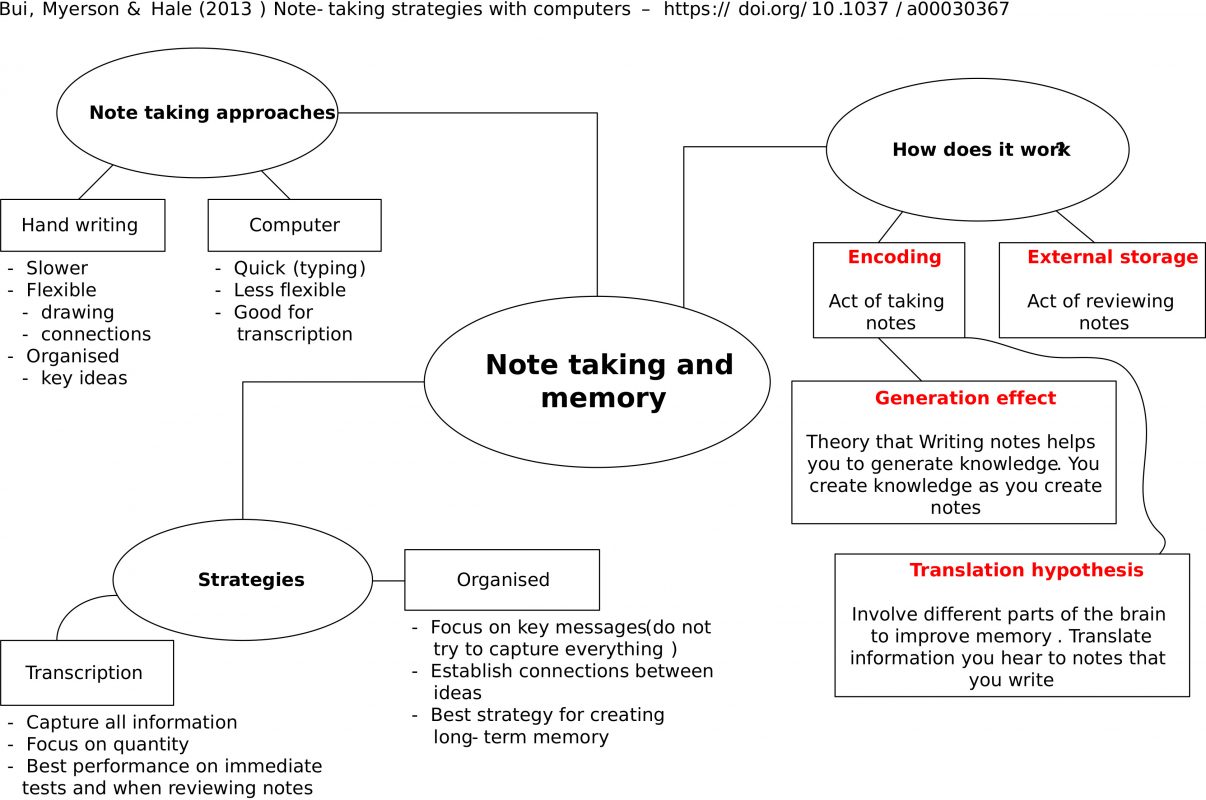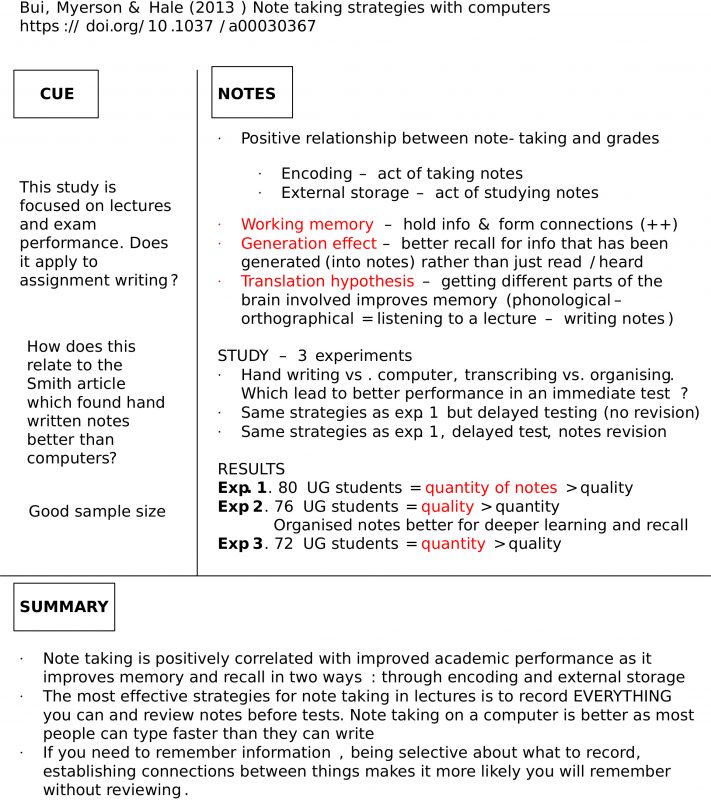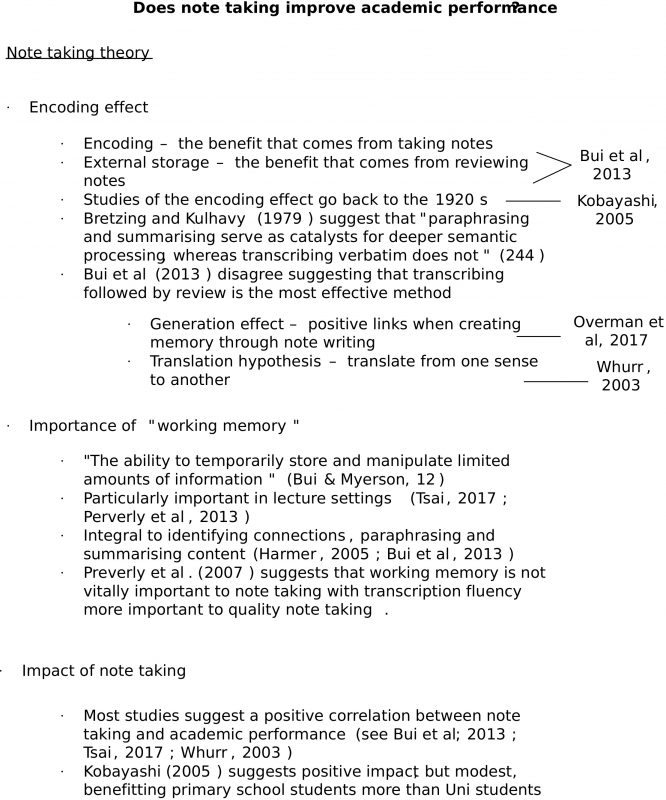3. NOTE TAKING
💡 Taking notes is crucial for effective studying and learning as it helps organize and personalize information from readings or lectures. It enhances active listening during lectures or meetings and aids in retaining knowledge. Note-taking also facilitates the internalization of knowledge by integrating information from various sources, fostering connections, and deepening comprehension.
Good notes are useful notes. Their purpose should be to serve as a bridge between the knowledge you acquire from your lectures and readings and the ability to show off your knowledge of a subject in an assignment.
Then, how do you take useful notes? Everything relies on you and how you learn best. There are various approaches to note-taking, and we’ll go over a few here. If you’re not finding anything that works for you, though, check out #studyspo for some ideas (keep in mind that lovely notes are only helpful if they enable you to make the connection between material and understanding).
There are a few constants among all note-making styles. As you’re taking notes:
- As you read and make notes, keep your thesis statement and assignment questions in mind. It will assist in directing you to the part of the source that is most helpful.
- Instead of exactly replicating the content from the source, note down the relevant details in your own words. This can help you avoid unintentional plagiarism, ensure that you comprehend the topic, and paraphrase it.
- Keep track
a) Cornell note taking
You have to divide your notes using the Cornell note-taking system into three sections:
- A Cue column where you write down any questions you may have for yourself after recording your notes
- A Notes column where you write down facts, important details and generally capture the gist of the reading or lecture
- A Summary section where you summarise what you’ve learned
I have to figure out the best note-taking technique for an assignment that will help me do better academically. I’ve read Note-taking strategies with computers: Exploring different approaches for better recall. by Bui, et al. and used the Cornell method to organize my notes
- First, finish the notes section, making sure to include any relevant information, definitions, and conclusions.
- List the main conclusions in the section under “Summary.” What knowledge have you gained? Regarding the question of your assignment, how does it relate?
- In the Cue section, ask yourself questions. Did you miss anything that you needed to know? Clear parallels or differences with other readings? Do you need to fill any gaps?
.
b) Mind mapping
Mind mapping is a visual method of taking notes that highlights the relationships between concepts. Usually, the main idea is shown at the center of the map, with auxiliary ideas branching out from it.
This type of note taking can be used to summarize concepts from several sources or to take notes during a single lecture or reading. Mind mapping is a useful essay planning technique that helps you create connections between the texts you’ve studied.
How does a mind map actually seem in use? View an illustration below.

c) Outlining method
The content in your notes is arranged using dashes and indentation when using the outlining method. More specific information is shifted to the right, while the most general information is aligned to the left.
It’s a good idea to read the source material through once before beginning the outlining approach as this will allow you to pinpoint the important elements ahead of time. This is going to benefit your organization.
So how does this actually appear in use? View the illustration on the right.
d) Synthesizing
Taking notes can be done both when reading a specific source and when you are reading for a larger picture, integrating what you have read with the knowledge from your lectures and any prior beliefs or opinions you may have. Synthesizing is the process of assembling information so that associations may be made and a more comprehensive picture of a subject can be formed.
Synthesizing allows you to identify areas in your research where there is agreement on ideas or findings. Additionally, you’ll be able to spot any areas where certain thoughts differ or conflict. Making these connections is an essential first step in the writing process of your project.
Bibliography
Bui, D. C., Myerson, J., & Hale, S. (2013). Note-taking with computers: Exploring alternative strategies for improved recall. Journal of Educational Psychology, 105(2), 299–309. https://doi.org/10.1037/a0030367
Curtin University. (n.d.). Library | Curtin University, Perth, Australia. Retrieved April 15, 2024, from https://www.curtin.edu.au/library/
Copyright
Unless stated otherwise, all VGU Library content in any shape or form is covered by a Creative Commons Attribution ShareAlike 4.0 International License. Kindly give credit to VGU Library for any use of the content and include a link back to our library homepage.



